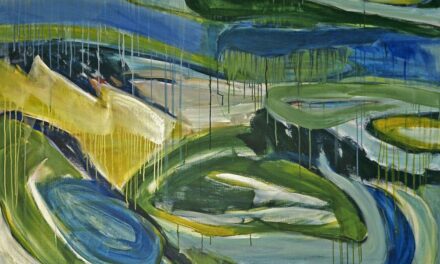Gustave Courbet was born on 10 June 1819 in Ornans, a small town in eastern France. He was the eldest of four children, and his father was a prosperous landowner and a prominent figure in the community. Courbet’s early life was characterised by a deep connection to the natural world, as he spent much of his childhood exploring the countryside around Ornans.
This connection to nature would later become a central theme in his art. Courbet’s artistic talents were evident from a young age, and he received his first formal art lessons at the age of 14. He subsequently moved to Paris to study at the Royal Academy of Fine Arts, where he was exposed to the works of the Old Masters and the emerging Romantic movement.
It was during this period that Courbet developed a deep appreciation for the works of Francisco Goya and Diego Velázquez, whose bold and unflinching portrayals of the human experience would greatly influence his own artistic style. Courbet’s early life and influences played a significant role in shaping his artistic vision. His rural upbringing instilled in him a love for the natural world, which would become a recurring theme in his work.
Additionally, his exposure to the works of Goya and Velázquez during his time in Paris had a profound impact on his artistic development, inspiring him to create art that was raw, honest and unapologetically real. These formative experiences laid the groundwork for Courbet’s later artistic style and set him on a path towards becoming one of the most influential artists of the 19th century.
Summary
- Courbet was born in a small village in France and was influenced by the natural beauty of the countryside and the social and political upheaval of the time.
- Courbet’s artistic style was characterised by a bold and realistic approach, often depicting scenes of rural life and the working class with a focus on naturalism and truth.
- Courbet’s controversial works and political activism made him a polarising figure, with his paintings often challenging the status quo and advocating for social change.
- Courbet’s impact on the art world was significant, as he paved the way for the Realist movement and inspired future artists to explore themes of social justice and realism in their work.
- Courbet’s personal life was marked by tumultuous relationships and a rebellious spirit, which often reflected in his art and public persona.
- Courbet’s legacy continues to influence future artists, as his commitment to truth and social commentary remains relevant in contemporary art movements.
- Notable works by Courbet include “The Stone Breakers” and “A Burial at Ornans,” which can be found in prestigious art collections around the world.
Courbet’s Artistic Style and Techniques
The Art of Capturing Human Expression
He had a keen eye for capturing the nuances of human expression and emotion, and his use of light and shadow added depth and realism to his work. Courbet was also known for his use of thick, textured brushstrokes, which gave his paintings a sense of immediacy and vitality.
Challenging Conventions
Courbet’s artistic techniques were revolutionary for their time, as they challenged the prevailing conventions of academic art. His bold and unapologetic approach to depicting reality set him apart from his contemporaries and earned him both praise and criticism.
A Turning Point in Art History
His use of thick brushstrokes and earthy colour palettes gave his paintings a sense of rawness and authenticity that was unprecedented in the art world. Courbet’s commitment to portraying the world as he saw it, rather than as it was expected to be seen, marked a turning point in the history of art and paved the way for future movements such as Impressionism.
Controversial Works and Political Activism
Throughout his career, Gustave Courbet was no stranger to controversy. His unflinching portrayals of everyday life often challenged societal norms and conventions, leading to heated debates about the role of art in society. One of Courbet’s most controversial works was “The Stone Breakers,” which depicted two labourers engaged in backbreaking work.
The painting was met with outrage from critics who viewed it as an affront to traditional notions of beauty and idealism in art. Despite the controversy, “The Stone Breakers” is now considered one of Courbet’s most important works and a seminal example of Realist art. In addition to his controversial works, Courbet was also known for his outspoken political activism.
He was a staunch advocate for social justice and equality, and he used his art as a platform to address pressing social issues. Courbet’s political beliefs were reflected in his paintings, which often depicted scenes of poverty, injustice, and struggle. He was an active participant in the revolutionary movements of his time and was even imprisoned for his involvement in the Paris Commune of 1871.
Courbet’s unwavering commitment to using art as a tool for social change solidified his reputation as a radical figure in the art world and earned him both admirers and detractors.
Courbet’s Impact on the Art World
Gustave Courbet’s impact on the art world cannot be overstated. His pioneering contributions to the Realist movement revolutionised the way artists approached their craft and paved the way for new modes of artistic expression. Courbet’s rejection of idealised beauty in favour of raw truthfulness challenged established norms and inspired future generations of artists to push boundaries and explore new artistic possibilities.
His bold and unapologetic approach to depicting reality set a precedent for artists to engage with social and political issues through their work, sparking a wave of artistic activism that would continue to resonate throughout the 20th century. Courbet’s influence extended beyond the realm of art, as he also played a pivotal role in shaping public perceptions of what art could be. His commitment to portraying the world as it truly was, rather than as it was expected to be seen, challenged viewers to confront uncomfortable truths and re-evaluate their preconceived notions about beauty and aesthetics.
Courbet’s impact on the art world was profound and far-reaching, leaving an indelible mark on the trajectory of art history.
Personal Life and Relationships
Despite his public persona as a radical artist and political activist, Gustave Courbet’s personal life was marked by complexity and contradiction. He was known for his bohemian lifestyle and unconventional relationships, often engaging in affairs with women outside of marriage. Courbet’s romantic entanglements were a source of much gossip and scandal during his lifetime, but they also provided him with emotional inspiration for his art.
His relationships with women were often reflected in his paintings, which portrayed intimate scenes of love and desire with an unflinching honesty. Courbet’s personal life was also marked by tragedy, as he experienced the loss of several loved ones throughout his lifetime. The death of his younger sister, Zoé, had a profound impact on him and inspired some of his most poignant works.
Despite these personal hardships, Courbet remained fiercely dedicated to his art and continued to produce groundbreaking work until his untimely death at the age of 58.
Legacy and Influence on Future Artists

The Pioneering Spirit of Realism
His pioneering contributions to the Realist movement laid the groundwork for new modes of artistic expression that would come to define modern art. Courbet’s rejection of idealised beauty in favour of raw truthfulness challenged established norms and inspired future generations of artists to push boundaries and explore new artistic possibilities.
A Challenge to Conventional Beauty
Courbet’s influence extended beyond the realm of art, as he also played a pivotal role in shaping public perceptions of what art could be. His commitment to portraying the world as it truly was, rather than as it was expected to be seen, challenged viewers to confront uncomfortable truths and re-evaluate their preconceived notions about beauty and aesthetics.
A Lasting Impact on Art History
Courbet’s impact on the art world was profound and far-reaching, leaving an indelible mark on the trajectory of art history.
Notable Works and Collections
Gustave Courbet is best known for his groundbreaking works that challenged established norms and redefined the possibilities of artistic expression. Some of his most notable paintings include “The Stone Breakers,” “A Burial at Ornans,” “The Artist’s Studio,” and “The Origin of the World.” These works are celebrated for their boldness, honesty, and unflinching portrayal of everyday life. Courbet’s paintings can be found in major museums and collections around the world, including the Musée d’Orsay in Paris, the Metropolitan Museum of Art in New York City, and the National Gallery in London.
His work continues to captivate audiences with its raw emotion and unapologetic realism, solidifying his reputation as one of the most influential artists of the 19th century. Gustave Courbet’s legacy lives on through his powerful paintings, which continue to inspire and provoke thought long after his passing.
If you are interested in learning more about different art movements, you may want to check out an article on post-impressionism. Post-impressionism was a movement that emerged in the late 19th century and was a reaction against the naturalism of impressionism. Artists like Vincent van Gogh and Paul Cézanne were key figures in this movement, and their work is known for its use of bold colours and expressive brushwork. To read more about post-impressionism, visit this article.
FAQs
Who was Gustave Courbet?
Gustave Courbet was a French painter who was a leading figure in the Realist movement of the 19th century. He is known for his bold and unapologetic portrayal of everyday life and his rejection of traditional academic painting.
What is the Realist movement?
The Realist movement was a 19th-century artistic movement that aimed to depict everyday life and society as it truly was, without idealization or romanticism. Realist artists sought to capture the realities of the modern world, often focusing on the working class and the harshness of urban and rural life.
What are some of Gustave Courbet’s most famous works?
Some of Gustave Courbet’s most famous works include “The Stone Breakers,” “A Burial at Ornans,” and “The Artist’s Studio.” These paintings are notable for their realistic and unflinching portrayal of everyday life and society.
How did Gustave Courbet’s work impact the art world?
Gustave Courbet’s work had a significant impact on the art world, particularly in challenging the traditional conventions of academic painting. His bold and unapologetic approach to depicting reality paved the way for future artistic movements, such as Impressionism and Modernism.
What was Gustave Courbet’s legacy?
Gustave Courbet’s legacy lies in his pioneering role in the Realist movement and his influence on subsequent generations of artists. His commitment to portraying the truth of everyday life and his rejection of artistic conventions continue to inspire artists and art enthusiasts to this day.




